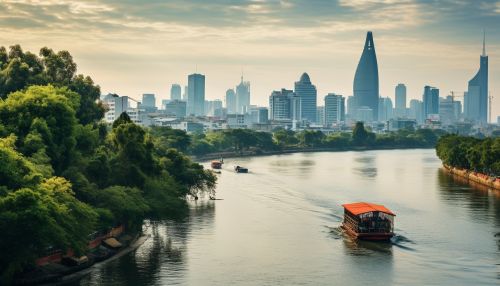Ho Chi Minh City
Geography
Ho Chi Minh City, formerly known as Saigon, is located in the southeastern region of Vietnam. It is situated near the Saigon River, which is a significant geographical feature that contributes to the city's economy and transportation. The city covers an area of 2,061 square kilometers, making it the largest city in Vietnam by land area.


Climate
The city experiences a tropical savanna climate with high humidity throughout the year. There are two distinct seasons: the rainy season, which runs from May to November, and the dry season, from December to April. The average temperature is 28 degrees Celsius, with little variation throughout the year.
History
Ho Chi Minh City has a rich history that dates back to the ancient kingdom of Funan. The city was a significant Khmer seaport known as Prey Nokor before becoming part of Vietnam in the 17th century. During the Vietnam War, it served as the capital of South Vietnam. In 1976, following the end of the war, the city was renamed Ho Chi Minh City in honor of the late North Vietnamese leader.
Economy
Ho Chi Minh City is the economic hub of Vietnam, contributing a significant portion to the country's GDP. The city's economy is diverse, with sectors including finance, real estate, information technology, and manufacturing. It is home to the Ho Chi Minh City Stock Exchange, the largest stock exchange in Vietnam.
Culture
The city boasts a vibrant culture that reflects its history and diversity. It is a melting pot of cultures, with influences from the Khmer, Chinese, French, and American cultures. The city is known for its cuisine, music, and festivals such as the Tet Festival, which marks the Vietnamese New Year.
Education
Ho Chi Minh City is a major center for education in Vietnam. It is home to many universities and colleges, including the Vietnam National University, Ho Chi Minh City, one of the largest higher education institutions in the country.
Transportation
The city has an extensive transportation network that includes roads, railways, and waterways. The Tan Son Nhat International Airport is the busiest airport in Vietnam, serving millions of passengers each year. The city is also planning to construct a metro system to alleviate traffic congestion.
